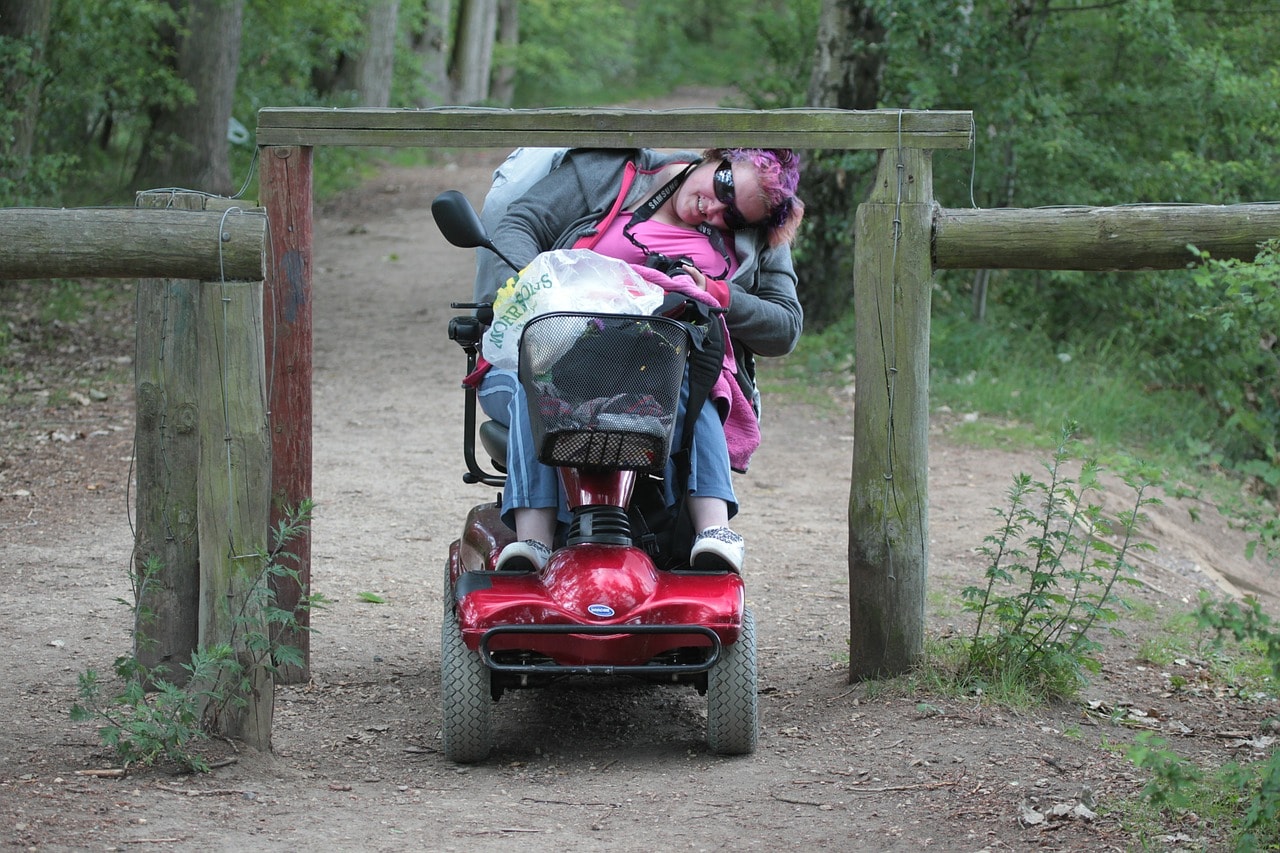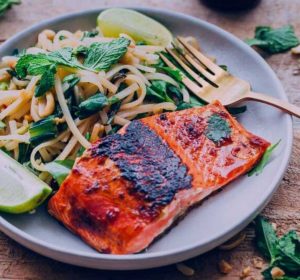Lose weight in a wheelchair or with limited mobility? It’s can be an easy task.
You see: Losing weight is simple mathematics. If for every calorie you put into your mouth you burn off more calories you will lose weight.
How fast you lose it depends on how great the difference is between food going in and calories being burned up.
I know what you’re going to say! “I am sitting in a wheelchair! I can’t job. I can’t swim. I can’t hike. I cannot play sports or even walk the dog. How do I burn off those calories”
Your point is well taken. However, I am in a wheelchair and I’ve lost 40 pounds. And, I didn’t stop eating.
I love my food too much for that. Let me share with you the step of my diet plan for wheelchair users.
How to Lose Weight in a Wheelchair or with Limited Mobility
The first step in your journey to weight loss and good health is to lose your tunnel vision. Stop listening to those voices in your head.
No matter what those voices tell you, it is possible to lose weight from a wheelchair. I am living proof. Believe in yourself.
Step #1: Cut Your Calories with a Complete Diet Plan
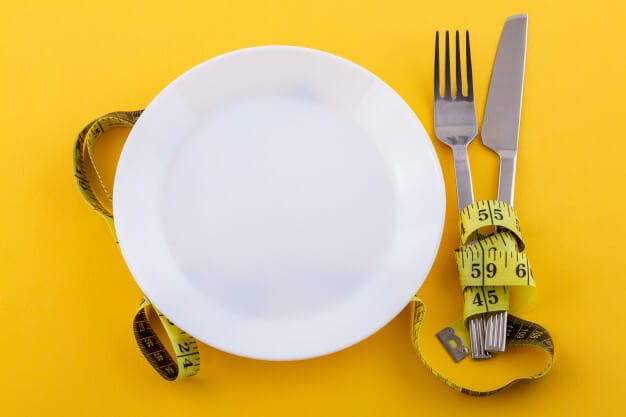
Remember what I said about a diet plan for wheelchair users? You need to ingest fewer calories than you are burning off.
Nowadays, people are more aware of healthy eating.
A 2019 study by Kitchen Stories involving individuals residing in the U.S., emerged that 36.2 percent of the respondents followed a balanced diet very often during 2019.
Here is a diet meal plan for how to lose weight in a wheelchair or when disabled.
A 1500 calories diet plan for physically disabled people:

Effectiveness of a 1500 calories diet plan:
A 1,500-calorie diet is a much popular weight loss strategy. But caloric demands vary among individuals, so the diet may not be effective for everyone. Some disabled people may be okay with 1,500 calories, while it may not the case for other physically disabled people.
Use the TDEE formula or ask a dietitian to get a more accurate estimate of how many calories you need per day.
Step #2: Slow your Stomach Emptying with High Fiber Food
The fiber content in food helps to fill you up for a longer period of time.
Fiber also slows the rate at which sugars are absorbed and released into your bloodstream, which may help you better manage weight.
The recommended fiber intake is between around 25 grams to 30 grams a day.
This type of small hack can help you to lose weight with limited mobility.
5 High-Carb foods that are super healthy:
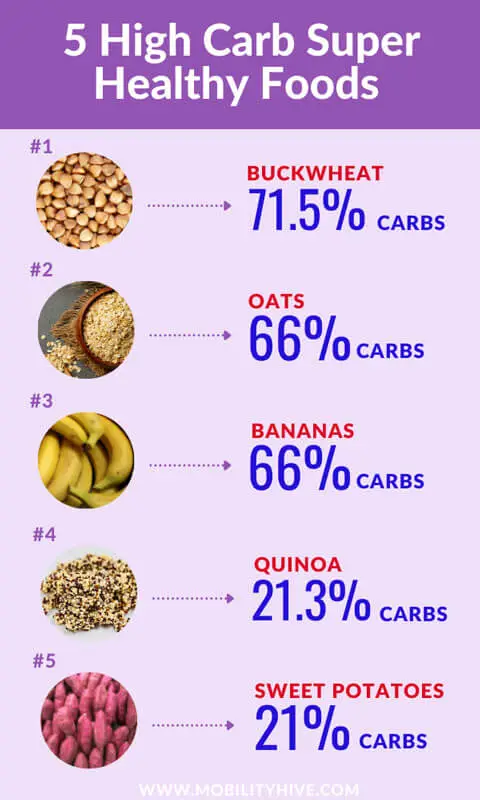
Step #3: Try Smaller Plate and Portion
Another lose weight with a limited mobility tip is to use a smaller plate.
When you’re using a small plate, it tricks your brain into believing that the portion size on the plate is larger than it actually is and will fill up faster.
This means that if you make this one simple change in your eating habits, you’ll start losing weight without even trying.
You should also try to eat at home more often because restaurants tend to offer large portions of food which may lead to overeating.
Step #4: Add Fruits and Veggies to Your Diet
The Dietary Guidelines recommend eating two cups of fruit and two and a half cups of veggies every day.
It is a smart plan to include both fruit and vegetables in every meal and between-meal snacks.
Fruits and vegetables are a natural source of vital nutrients like fiber, vitamins A and C. folate, and potassium.
Step #5: Choose Low-Cal Foods
Low-calorie foods will help you lose weight whether you exercise or not. How do you eat low-cal? Forget those rich, creamy, calorie-laden heavy dressings. Make melted cheese a distant memory. Be restrictive on bread. Avoid the bakery. There is nothing low-cal there.
Shop the outside of your grocery store. That is where you will find the whole foods. Avoid packaged and prepared foods. They are high in salt, sugar, fat and calories.
Take a different route home to avoid fast-food restaurants. Pack your own healthy snacks. Nothing in vending machines is good for you.
To make foods tasty, add spices and herbs.
Change the way you prepare food. Roast, broil, grill, and stir fry instead of frying foods.
Step #6: Make Fish Your Friend
There are many reasons to eat at least two fish entrees a week. Make sure one of them is oily fish. It is high in omega-3 heart-friendly fats. Oily fish include: herring, salmon, sardines, trout, and mackerel.
Fish are an excellent source of protein. Non-oily fish are still good for you. Eat haddock, cod, tuna, skate, plaice, and hake.
Choose fresh, canned or frozen fish. Canned and smoked fish are high in salt
Learn to prepare fish so it is low-cal. This means grilled, poached, baked not fried or breaded or battered.
Step #7: Learn to Read Labels
In a study conducted in August 2019, found that 35% of Latin Americans regularly read food labels before buying food products. Within the same survey, 24% always read food labels before their purchases, while 25% did so some of the time.
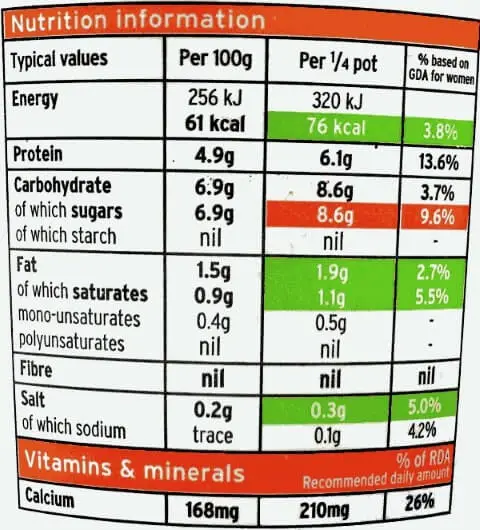
In choosing healthy eating, you are trying to cut fats, sugars, and salt. Look for foods that contain low percentages of these.
Yes. You need fat in your diet. However, you want to avoid saturated fats. These increase cholesterol in your blood.
Aim for a maximum of thirty grams of saturated fat daily if you’re a man and twenty if you’re a woman. Children should have even less.
2 of My Favorite Easy Tasty Recipes for Fast Weight Loss:
Step #7: Drink Water Instead of Soda
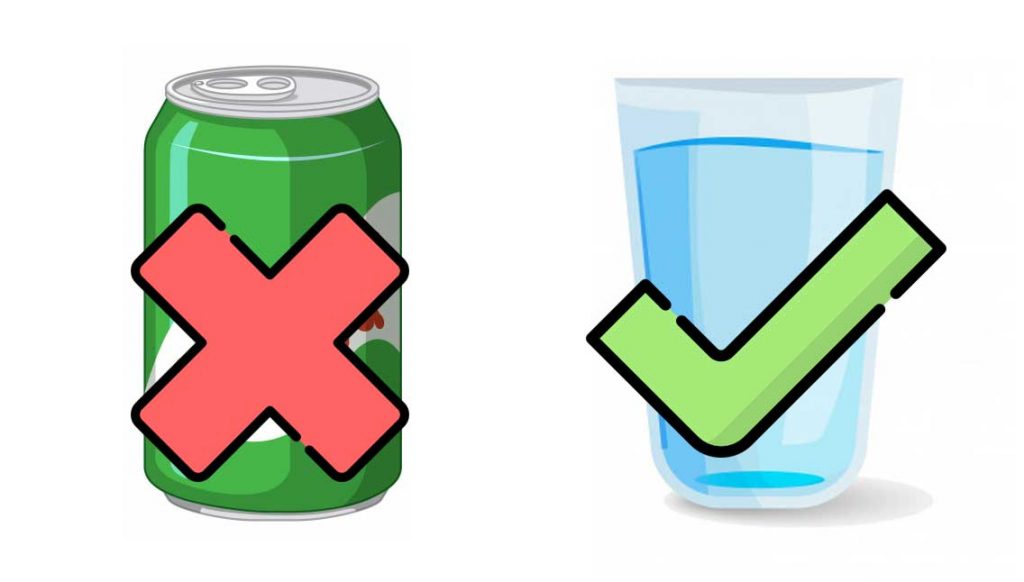
A lot of weight gain can come from those little cans and bottles we buy every day-even diet sodas!
The difference between drinking water and sugar-sweetened beverages is huge: One 12-ounce (355 ml) cola drink contains more than 10 teaspoons (41g) worth of sugars.
Harvard School of Public Health
That’s more than our daily recommended intake.
So, try cutting out soft drinks as much as possible; replace them with plain water or sparkling mineral waters.
Water flushes the toxins from your system. It keeps organs hydrated and working smoothly. Water is also a natural appetite suppressant.
Here’s how it works. When your stomach is full, it tells your brain to stop eating. If you drink water before a meal, you feel full sooner. You eat less.
One study in adults found that drinking 500 ml (17 ounces) of water before each meal can lead to greater weight loss.
National Institutes of Health
Step #8: Get Active in a Wheelchair

It is no myth. You can get active in a wheelchair. I didn’t say it was easy to lose weight in a wheelchair. Think of it anatomically. Your legs make up over half of your body’s muscle. When they don’t move, you burn considerably fewer calories. But it is not impossible to lose weight.
You have to get creative. If your legs are not burning calories, what else can you do? Well, one solution is to engage in an upper body workout for wheelchair users.
There are so many seated exercises that you can do when you are sitting in your wheelchair. This is perfect for those who cannot stand up due to limited mobility or obesity!
Here are some ideas that may exercises for wheelchair users work for you!
Best Wheelchair Exercises for Weight Loss
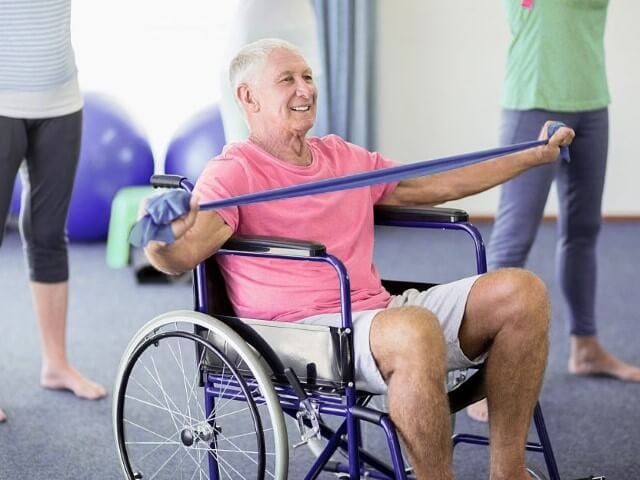
If you are a visual learner then YouTube is a wonderful source of weight loss exercise for wheelchair users.
Wheelchair workout videos range from simple exercises to more complex ones. Some wheelchair workout videos focus on burning body fat and others are on stretching out stiff muscles.
If like me you are not a “group exerciser” then you can do these in the privacy of your own home. You can exercise whenever your energy is highest.
Do not start any of these exercise routines if you have a serious medical condition, or are pregnant without speaking to your doctor first.
Here are three of my favorites:
#1 In this video, physiotherapists, Bob Schrupp and Brad Heineck, demonstrate how to stretch from a wheelchair.
From a seated position, thy demonstrate how to decrease your muscles strain, aches and pains at the same time, increasing your flexibility and range of motion. This is a really great seated exercise for obese and limited mobility people.
#2 Narrated and demonstrated by Ashley Freeman, this fifteen-minute video presents a full upper-body workout. If you want to exercise and burn fat from a wheelchair, this one is for you.
How to Lose Belly Fat in a Wheelchair?
#3 This video features amputee KymNonStop as she demonstrates a seated ab and arm workout intended especially for those who want to lose belly fat in a wheelchair.
All three of these videos were created by real people in wheelchairs. They provide upper body exercise for wheelchair users to lose weight.
Checking Your Weight
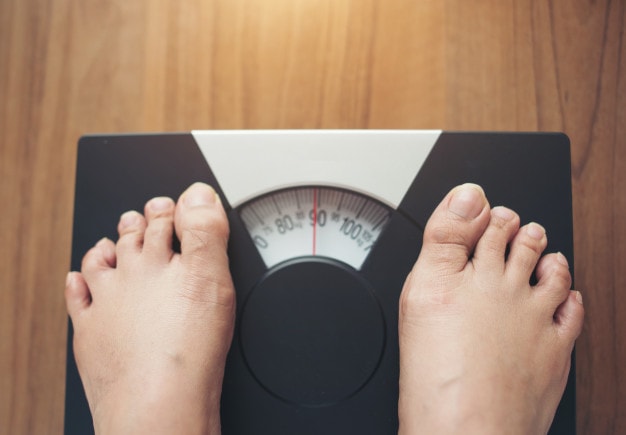
Before we begin with a diet plan for physically disabled, let’s talk about checking your weight. It’s not as simple as stepping on a scale.
Begin by checking what you should weigh using the Body Mass Index (BMI).
Then, discuss your ideal weight with your doctor. He/she will suggest a method of determining your present weight
Why is this important? By determining what you presently weigh and checking to see what you should weigh, you gain a good picture of how much weight you should be losing.
This helps you set realistic goals and miles stones along the way.
For this reason, the bathroom scales are an important and useful tool. They help you see that you are progressing toward your end goal.
But, don’t get obsessive about weighing yourself. It is normal for weight to fluctuate. It is normal for weight to fluctuate.
See it. Believe it. Achieve it.
When my sugar levels were reaching pre-diabetic levels and my blood pressure was creeping up, I knew it was time to get serious about losing weight. I hated the way I looked. I couldn’t lift myself from the chair to my bed anymore because I was just too heavy.
That’s when I gave myself an attitude adjustment. I knew that being in a wheelchair was no excuse for weight gain.
My first step was to visit my doctor. Together, we set realistic goals. I posted them so I saw them often.
Next, I saw a nutritionist. Finally, I engaged a personal trainer.
It has been a long but successful journey. Without the support of those around me, I am not sure I’d have reached the “achieved it” stage. The journey starts with YOU. You must be prepared to see what you don’t like and believe you can change.
Frequently Asked Questions about Weight Loss for Disabled Person
How to lose weight with limited mobility?
You can lose weight with limited mobility by following a calorie-restricted diet, restricting you to about 1500 calories per day. Consulting with your doctor before starting any weight loss programs is also a good idea!
How can I lose weight if I can’t exercise?
You will most likely need to reduce your calorie intake and increase the amount of fruits and vegetables in your diet if you really want to lose weight.
Start with understanding the calorie count of your food. Find out how many calories you need per day, then lower that reportable number by 500-1000 kcal/day–I recommend that experimentation with this number is done over time since what might be sustainable in one month may not be sustainable a year later due (for example) to changing metabolism.
- 17 People with Disabilities Who Will Inspire You to Never Give Up - April 12, 2020
- Drive Medical Cruiser III Wheelchair Review - December 15, 2019
- Lose Weight Fast in a Wheelchair: I’ve Lost 40 Pounds - December 4, 2019
